REVIEW – We have ridden hours and hours on the island of Tsushima, accompanying Jin Sakai on his odyssey against the Mongol invasion. We tell you the story of these survivors in detail in the analysis of Ghost of Tsushima, an open world full of beauty and deadly sword fighting. With and without honour.
Anyone who has been to Japan can tell you what a beautiful country it is. There are many beautiful corners in the world, but this one has that characteristic of being so beautiful that it overwhelms. Its nature hides an infinity of shapes and colours and, at certain moments, the traveller feels as if his eyes are not capable of absorbing so many stimuli at one time. By capturing this essence of the Japanese country, if Ghost of Tsushima were half as precious as it is, it would already be striking. But the world they have created and recreated is truly intoxicating. There has not been a second in all the hours of play that I have spent riding through its grasslands, climbing its mountains and descending its cliffs, that I have not been completely overwhelmed.
And I’m sorry, but I have to keep emphasizing this fact because it is important. Yes, graphics are important. In general, in any video game the visual design always helps to attract us; enters us through the eyes. Little by little, its benefits are relegated to the background as the story and the mechanics take centre stage. It is logical, up to a point, that human beings get used to beauty. But in Ghost of Tsushima, even having taken the long way off completing absolutely all of its side missions and a few extra tasks that the game proposes, I couldn’t help but admire the world it has built. It is, without a doubt, one of the most beautiful games today, if not the most. Almost a glimpse of what the years to come to await. Sometimes that may be enough. See how Jin, riding across a plain, reaches out to stroke the tall grass; how, after climbing to the highest peak of a mountain, the camera expands to see the island from a bird’s eye view; to see a lightning strike cruelly against the ground in the middle of a storm, while the mud covers a good part of your body … These are moments that I take away from this experience.
In Ghost of Tsushima, the island is the real protagonist, more than Jin Sakai. Although the game divides it into three parts, according to the three acts in which it takes place, each section has unique and well-differentiated places (Sucker Punch speaks of 40 biomes ). All beautiful. In a moment you find yourself in an area full of springs, to pass a bamboo forest, a rice field or an autumn landscape full of trees of intense colours. For this reason, more detail has been put into the slight flow of the leaves under your feet, which are raised at the pace of your horse, than to the animation of our samurai descending a ladder, for example. There aren’t many contextual animations here, nor will you see the same pleasure in face detail as in The Last of Us Part II. And that’s because Tsushima Island is the one that should shine above the rest. The smoothness with which this world is traversed is such that I have hardly noticed any differences between those two classic graphic modes: resolution and smoothness. In both, the game moved perfectly. All in all, the visual design is so colossal that I would perfectly understand if someone were interested in Ghost of Tsushima exclusively for this reason.
Navigating this island, however, is another matter. It seems from some of his trailers and messages that Sucker Punch wanted to get rid of that jumble of icons that populate the maps of the open worlds. They wanted to encourage the curiosity of the player, based on the mere observation of the environment. And although there is some of that, the truth is that it is much less subtle and effective than it may seem at first. I have barely been guided by the smoke of the fire of a bonfire to find my way (except in a mission that required it) and the wind serves as a guide that helps the immersion, yes, but that has often had me consulting the map game to make sure I was on the right track.
This quest by developers to find new formulas to guide players through their worlds is something that fascinates me. It is clear that one of the references to be followed by the company ( they have admitted it ) is The Legend of Zelda: Breath of the Wild which, based on subtracting icons from the map, encourages that curiosity in the player by manually searching for hot spots on the ground. This he achieved by creating a game specifically designed to reduce visual guides and by removing such icons from the map as much as possible. But Ghost of Tsushima nonetheless feels more like a traditional game, built to have lots of icons, menus, and HUDs, with those guides, removed. The result is similar to the classic experiment that many players have once done, going to the options menu and removing key elements from the interface. Yes, it is more immersive; sometimes it even works well. But at other times we feel lost. We cannot find our destination without the markers or we do not know that we have to press a button without a mark that tells us.
This “disorientation” has happened to me sometime in the Sucker Punch work. I had to follow a trail or fixate on an element of the stage, but until I was within a foot of the object in question, I did not know what to do or where to go. Normally, the wind takes you to a specific location and, once there, that “detective mode” in The Witcher 3 style is activated which, by collecting clues, takes us from one place to another. But the interface wants to be so subtle, at times, that it gets confusing; and it’s easy to end up misleading the player.
Perhaps it is better understood with the altars of Inari. Scattered places on the map where, by praying in them, we get a small talisman. The game wants you to follow some playful foxes to find them, so while you travel the island, you come across these animals that lead you to the whereabouts of the altars, which do not appear on the map. But the location of the foxes is indicated on the map (even with fast travel), so that all sensation of discovery goes a bit to the ruin when you realize that these animals are nothing more than intermediaries that take us, without mistake, to the altar. And it is somewhat ironic that the game wants to stimulate the curiosity of the player by removing an element from the map, but adding another that fulfils the same function, only lengthened.
These elements, such as altars, hot springs, bamboo games, crickets or pillars of honour, are relatively optional after all since everything important is correctly marked on the map. Some of them help us to get determination, other health, other talismans and other cosmetic or collectable items. Of course, the game has one of the most vertiginous fast trips that I have seen, with a loading screen that disappears in just 5-10 seconds from end to end of the island (it is really fast compared to other games of similar cut), so it is very comfortable to move around the island in search of its secrets.
The code of honour
Ghost of Tsushima tells the story of Jin Sakai, a samurai who fought in the Battle of Komoda, in which a handful of samurai faced the Mongol army and was massacred by the hosts of Kublai Kahn. Jin survives the cruel skirmish but realizes a terrible truth: There is no fair way to confront the Mongol army, which does not follow the samurai code or fight with honour. This is where the duality of the ghost is born, a way of facing the enemy by attacking from behind and using terror as a weapon.
Jin’s conflict itself is very interesting and a great foundation for a video game. It is one that allows us to explore, from a historical perspective, to what extent war puts us in an extreme situation where we have to sacrifice our ideals. And if the sacrifice of those ideals turns us into a different person, in the process. The premise is good and the game seeks to make you participate in this duality. But while there are key moments to understand Jin’s story, others seem too accessory, as if the story was not able to fill all the main missions that compose it. The story is told in leaps. Divided into three acts,Only the final moments of each of them and the beginning of the next are relevant. The medium is always diluted in a series of missions that do not delve into the plot and (with some exceptions) are hardly important for its development, creating a series of forced ups and downs that, if you add the hours of play invested in others Side missions make up an interesting story, yes, but somewhat lacking in substance and lacking in rhythm.
To liven up the main story we have a series of Stories: character-centered side missions that unfold little by little throughout the adventure. They are very reminiscent of Days Gone, because, although they are optional, they are always related to an important character and they feel almost mandatory if you want to get the most out of the game. Not just to get some extra gear, too, but to get a bigger picture of the aftermath of the Mongol invasion. They are interesting stories, some of which have caught my attention more than others, but that sometimes lose strength because the approach of each of the missions is very similar and repetitive.
I think that, of all the aspects that make up Ghost of Tsushima, the narrative is the one that is most difficult for me to face. Every mission seems to force the plot into relentless action, and sometimes that causes the story to not breathe. However, there is a certain sensitivity in its background, which could have surfaced, if the approach were somewhat more varied. One of the stories that I liked the most was that of the housekeeper of the Sakai clan, the Jin clan, and it was precisely because she stopped the fighting in some moments to let the story unfold naturally and we could better understand the character conflict.
And it’s weird because as you go around the world, you have a slight feeling that Ghost of Tsushima at some point in its development was a different game. In certain missions they allow you to make decisions, which have to do with following the code of honour or hugging the darkest character you are becoming, but they have no relevance to the events or have consequences. However, they remain as a remnant that makes me think that, perhaps, at some point, this game made us choose our way between samurai and ghost. Decide both morally and playable what we wanted to be. Some stories seem to follow one of the two paths, facing the fight like a samurai, compulsorily; and the same happens in the opposite case, with the way of the Ghost and stealth. It is something that contrasts sharply with the freedom that on other occasions the game seems to want to give you, to face the objectives as you want.
Samurai or Ghost
The combat, on the other hand, has been a complete surprise. When I saw some of the early Ghost of Tsushima videos, I thought I would quickly decline due to stealth in the fighting. It seemed like a simple battle system, urging the player to always react to the counterattack. I’m glad I’m wrong. The result is fairly well-planned combat, with many options that the game requires of you at the risk of being outnumbered by enemies. It was not easy for him. After all, there are only human enemies in Tsushima and you have to resort to class specialization to achieve that variety.
Having fought for dozens of hours (the campaign can last 30-35 hours, but I have completed all the secondary missions and most of the activities in your world, up to around 60 hours) I have always found it stimulating. Jin has tools of all kinds to deal with opponents. Each type of enemy, whether it bears a sword, spear, shield or large units, responds to a fighting stance, which encourages us to vary the strategy according to the type of threat. By switching to the water stance, for example, we can better respond to shield enemies. Not only can we break their attacks better with heavy blows, but we can unlock devastating combinations and making dodges or blocks that were previously impossible.
As we move up the skill tree and get more gear, the possibilities expand. The kunais destroy the opponent’s guard. The smoke bombs let slip away but also unlock the option to perform stealth attacks (which can accumulate up to triple attacks). The explosives and sticky bombs wreak havoc and arch serves to hold off distant enemies. And I am not describing all the options. Many advanced skills help create a varied combat system, with some moves that, if we get them, really make a difference.
I think the great success of the system is Determination. Those golden circles that accompany the life bar are everything. They serve us to heal ourselves, but also to perform special movements. Having to kill more enemies to achieve Determination generates a very balanced flow that keeps us thinking about the best strategy, especially when there are numerous battles. Sometimes these confrontations can be exhausting when we face hordes and hordes of enemies, but Tsushima always manages to continue giving us tools to try in the fray.
Besides, there is a way to “open” each fight. By pressing a button we can call a rival to start a small individual confrontation, in which we win by drawing the weapon an instant before the enemy opens the guard to attack us. They are those more cinematic moments, in which Jin takes out his enemies in the blink of an eye. It is a minigame, but it perfectly captures the spirit of the samurai movies in which it is inspired and that, if we complete it perfectly, can make us start each fight with a good part of the enemies eliminated (and scared).
There are also other types of confrontations: the so-called duels. One-on-one battles against final bosses that put everything learned to the test and have their own health bar to decrease with skill and reflexes. They represent the culmination of what the game wants to achieve both in design and aesthetics, with some memorable confrontations thanks, above all, to the place where they occur. Yes, splendid sunsets with flying leaves, as we have seen in videos, but also other scenarios that I prefer not to reveal.
Combat is one of the points that has convinced me the most, without a doubt. Whenever I think about open-world games with close-quarters combat, the truth is that it is difficult for me to find good references (my favourite has always been Dragon’s Dogma), but I would dare to say that Ghost of Tsushima is a good sample of that this open-world genre can make cool combat systems if it puts its mind to it. Yes, indeed, it is not perfect. Some problems with enemy artificial intelligence have ruined some confrontations by getting a little “stuck”. the camera. He also plays tricks, especially in very closed moments, since the game avoids using the classic lock-on in the Souls style, causing Jin, at times, not to face the most logical enemy. But in general, it has been a pleasure to alternate this combat with stealth, especially for a player like me, who whenever they give him stealth as an option, he uses it to the fullest.
So let’s look at the other side of combat: stealth. As a Ghost, Jin will show no mercy in stabbing enemies in the back and, as we progress through the skill tree, perform triple kills, through doors and accurate shots. Compared to the possibilities of combat, stealth seemed somewhat simpler in its conception. It relies heavily on your ability to see enemies through walls with complete precision and once you unlock the ability to move quickly in this mode it loses some charm, but is also functional and gives variety to the confrontations.
Perhaps the problem with stealth is that the settings (often Mongol camps or captured towns) are simple in design, not taking full advantage of Jin’s capabilities. We can sneak under houses, go through small skylights and gates at street level. Get on the rooftops, manoeuvre through taut ropes and use a fabulous hook to move from one place to another. However, the level configuration concerning the enemies rarely encourages the player to complicate his life so much and in many cases, a simple corner or tall grass is the best resource to camouflage himself.
In the end, stealth becomes one more tool of the many that Jin has, rather than his way. You can start by using it to dispatch some enemies and then move on to action, as happens, for example, in an Assassin’s Creed. Yes, I must admit that I expected something more in the approach of the missions that allowed me to make myself feel like a ninja, but, except for rare occasions, it does not seem to be the goal of the game.
When you start your adventure in Tsushima the combat may be too simple, but be patient, this is due to the progression system. It is always gratifying to unlock some movements and new weapons, but Jin begins the adventure in such a basic way that the first hours of play can be simple until we unlock the four positions that allow us to fight on equal terms with all enemies. Instead of being a progression system in which we are unlocking the creativity of our character, we go through a small bump in which, first, we get all the basic movements until we finally feel complete.
Fighting the invasion
There are dozens and dozens of missions throughout the three portions that make up Tsushima. But no matter how much you move from the warmer coasts of the island to the coldest moors, I couldn’t help but feel that they all felt the same: kill the Mongols. Exploring the territory, meeting the people that populate this world, everyone asks you for one thing. Makes sense right? After all, we are experiencing the invasion of Japan. But both in the approach to the mission and the motivation of the characters themselves is where we miss more depth.
All the subtlety he has in the beautiful construction of his world, he lacks in the narrative. Often, we meet all kinds of characters who have been affected by war. For example, a manager of the best Sake distillery. But instead of taking his time to build his story, giving some brushstrokes of the art of making Sake or what this drink means to the Japanese, Sucker Punch rushes in the story and the owner, the second he meets us, quickly orders us to let us take care of the Mongols. In the more developed missions, we make use of the aforementioned “witch mode”(although without having a special vision, to make it more realistic) that is used to follow tracks and take us to the place where the confrontation begins. Rarely does the narrative surprise us. Even the Stories, in which we are accompanied by a more important character, have certain ups and downs, without being able to create the environment and adequate motivation to face our objectives.
Goals that are based on a repetitive formula: talk to a character, accompany him, follow the trail and clear enemy camp over and over again. The game struggles to break out of this pattern to try and create a memorable mission, with unique, handcrafted moments and locations. With exclusive planning for that mission. Even some main quests fall short of this often straightforward design, which never quite satisfied me as a player. The freedom of its open-world sometimes takes you to the dreaded invisible walls, with a dreaded “Back to the story” sign and ten seconds to turn around, allowing the player to approach the mission only as the director wants. you do.
The best moments are when Ghost of Tsushima takes itself less seriously and urges us to chase myths in some special stories that are one of the best missions in the game and in which it is easy to let the imagination run wild: the Legend missions. In them, we have to find a location on a map that takes us to mysterious, secret places that always reward us with unique techniques or armour, breaking out of that established pattern derived from normal missions. Even creating rules and systems that we will not see repeated.
The same goes for the fascinating sanctuaries. Wandering through his world, we find Tori arches that converge in only one direction, towards a special and quite inaccessible temple. As the best built and designed watchtower, taking advantage of all the verticality that the game is capable of offering and unleashing a platform slope that we would have liked to see more, making the most of the hook, these sanctuaries are fun to climb and reward not only with a special talisman but with a splendid sight that once again captivates us with the beauty of this world. Both the shrines and the Legend missions, which can be considered almost tertiary activities, but I have carried them out one hundred per cent with a full smile of satisfaction on my lips.
In case this text does not corroborate it, Ghost of Tsushima is one of those games in which it could be reeling in a long way the design decisions that have been made in each of its sections because each one of them contains a lesson about our environment and philosophy behind how to build open worlds. And it is that throughout the generation there have been many studies that have sought a way to stand out in this complex genre, which still has many hidden faces to discover. But the conclusion I think is much simpler, and it has to do with which of these characteristics that I have been breaking down throughout the analysis conquer you and which do not. If you want a game that seeks to differentiate itself in the approach to its missions and its open world, Tsushima may not be what you are looking for. If this doesn’t matter as much to you, you will feel more receptive. His story, in my opinion, will please some and leave others wanting more. I think it lacks some of that finesse in the narrative that we have seen in other works, but it serves as a pretext to develop its missions. If, however, you are looking for a game of enormous beauty, Kurosawa was shooting his filmography (there is even a black and white filter to honour the director), you have many incentives for Ghost of Tsushima to please you. Here I have no doubt. Sucker Punch’s new work may not be as bold as it thinks it is in some respects, but there’s no denying that it’s evocative; that there is something in it that inevitably captivates you, with that same mysticism that hides the beautiful country in which it is inspired.
Ghost of Tsushima is one of the most beautiful open worlds we’ve seen in a video game. Probably the most beautiful of all. In the end, it’s the navigation system that promised to foster the curiosity of the player is more traditional than it might seem at first and the missions that we complete with Jin Sakai have a somewhat basic and repetitive approach, which in most cases they do not achieve. get out of the pattern. But the samurai battles that it proposes are fun and full of possibilities to face the Mongol invasion. He could have delved deeper into his characters, beyond his desire for revenge, but Jin’s duality between samurai honour and the necessary ghost will keep us entertained for many hours.
-BadSector-
Please support our page theGeek.games on Patreon, so we can continue to write you the latest gaming, movie and tech news and reviews as an independent magazine.
Become a Patron!
Pro:
+ One of the most beautiful open worlds we have seen
+ The combat is very fun, dynamic and full of possibilities
+ Solo duels and confrontations
Against:
– The missions are very repetitive. It barely manages to get out of the basic pattern, even on many of the major ones
– A greater depth in the story and its characters is missed, delving into the human side of the conflict
– The camera and artificial intelligence in the confrontations can give some problems
Publisher: Sony Interactive Entertainment
Developer: Sucker Punch
Genre: open-world action RPG
Release date: July 17, 2020
Ghost of Tsushima
Gameplay - 8.4
Graphics - 8.8
Story - 7.2
Music/Audio - 8.2
Ambience - 8.2
8.2
EXCELLENT
Ghost of Tsushima is one of the most beautiful open worlds we've seen in a video game. Probably the most beautiful of all. In the end, it's the navigation system that promised to foster the curiosity of the player is more traditional than it might seem at first and the missions that we complete with Jin Sakai have a somewhat basic and repetitive approach, which in most cases they do not achieve. get out of the pattern. But the samurai battles that it proposes are fun and full of possibilities to face the Mongol invasion. He could have delved deeper into his characters, beyond his desire for revenge, but Jin's duality between samurai honour and the necessary ghost will keep us entertained for many hours.

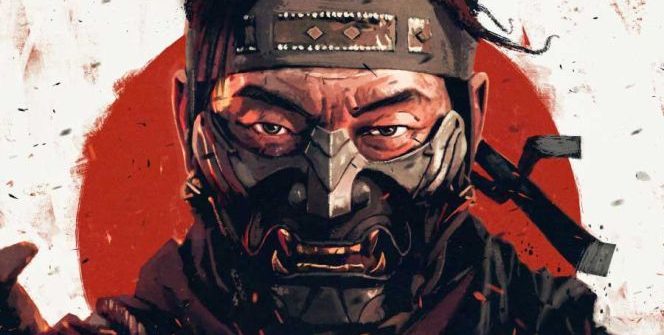


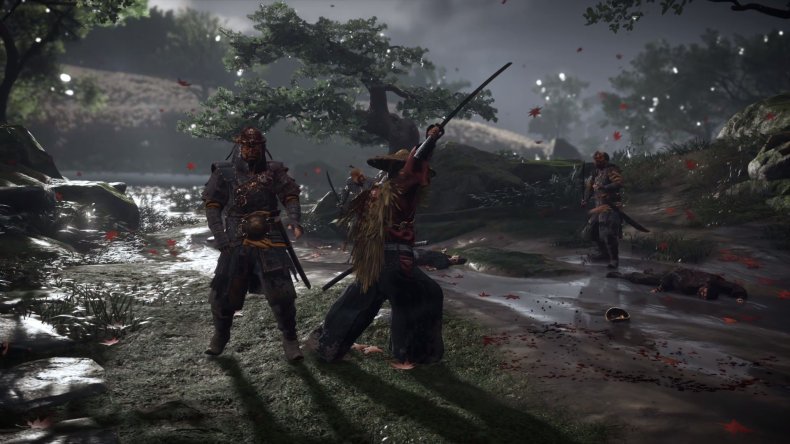

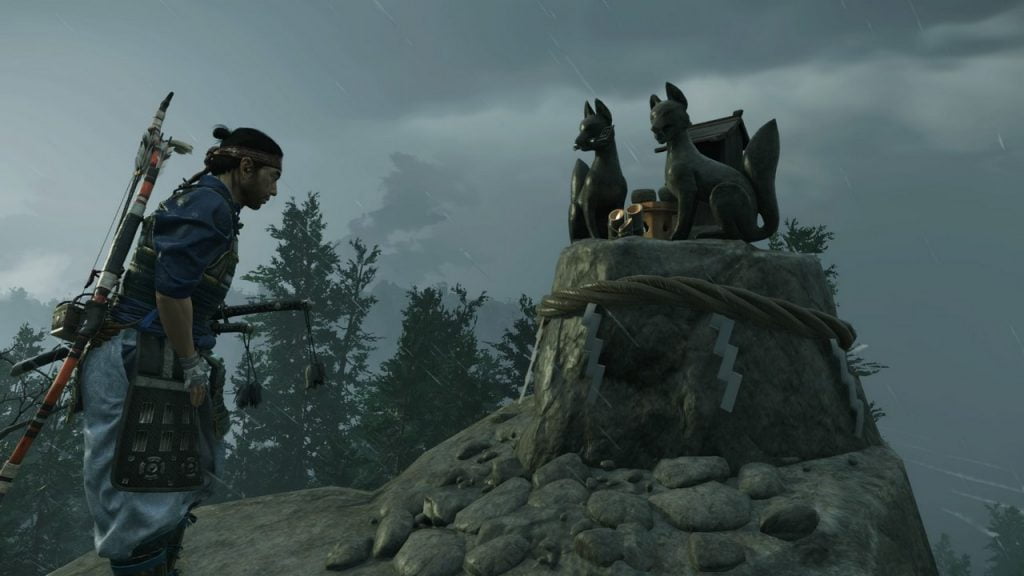
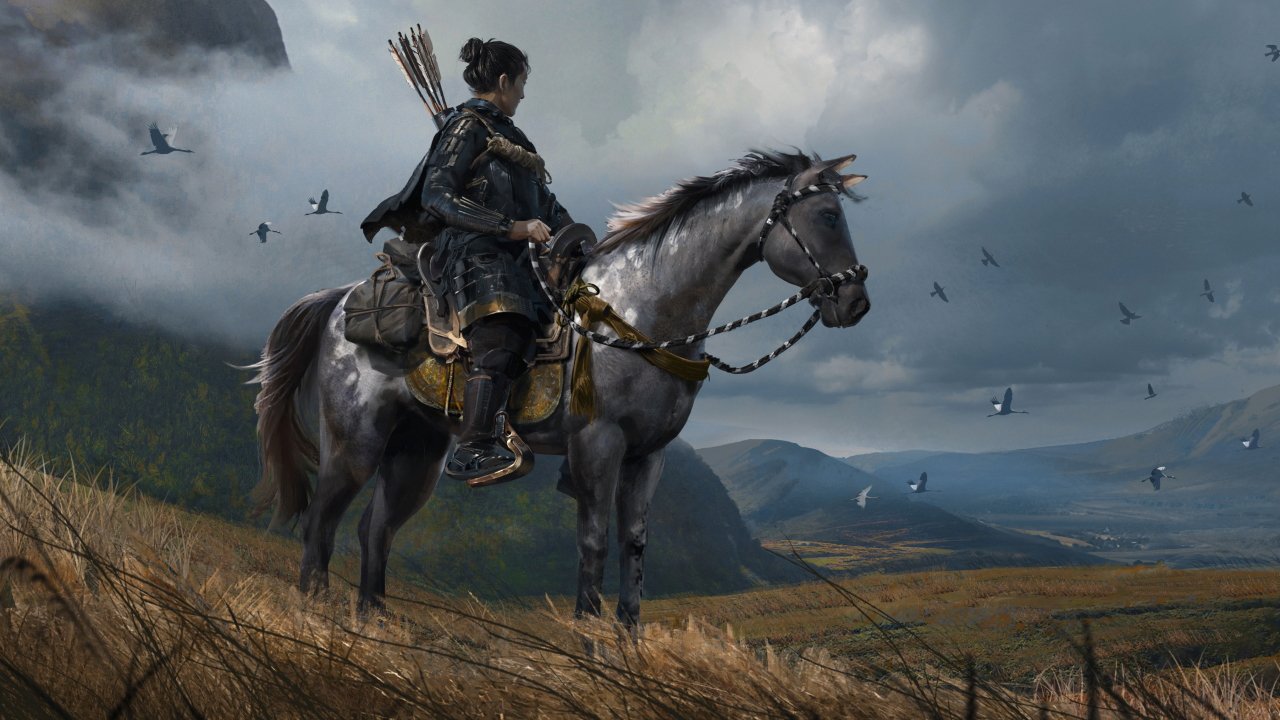

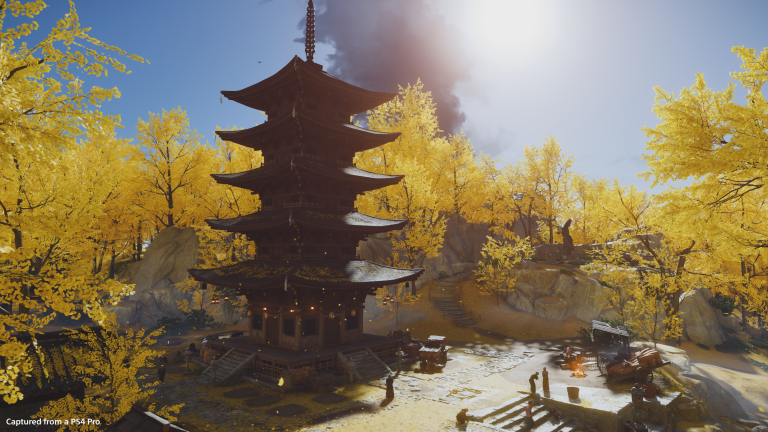

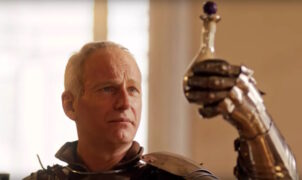





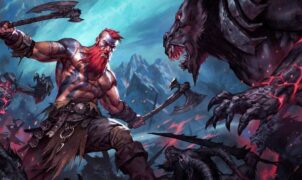

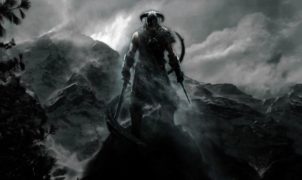



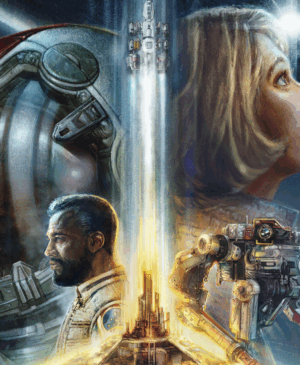
Leave a Reply